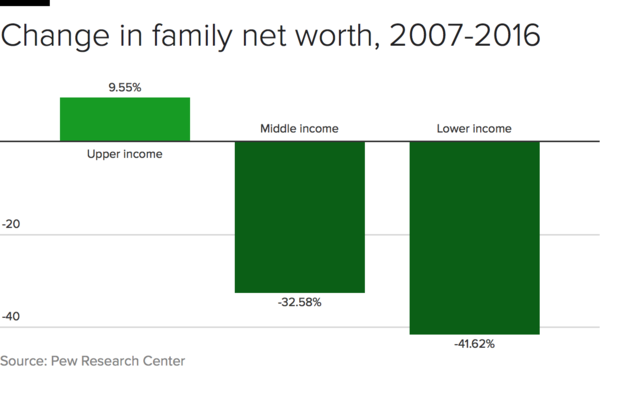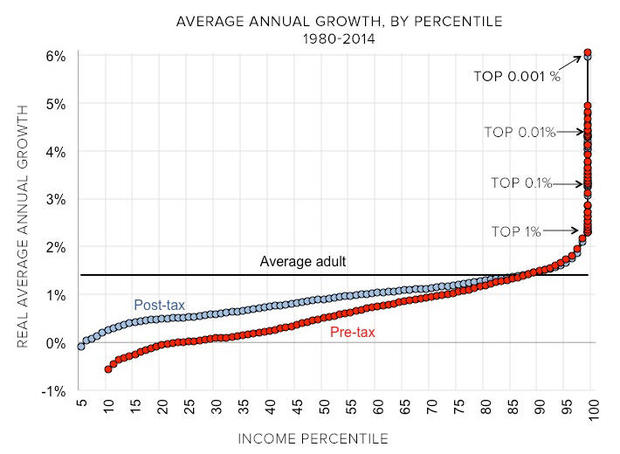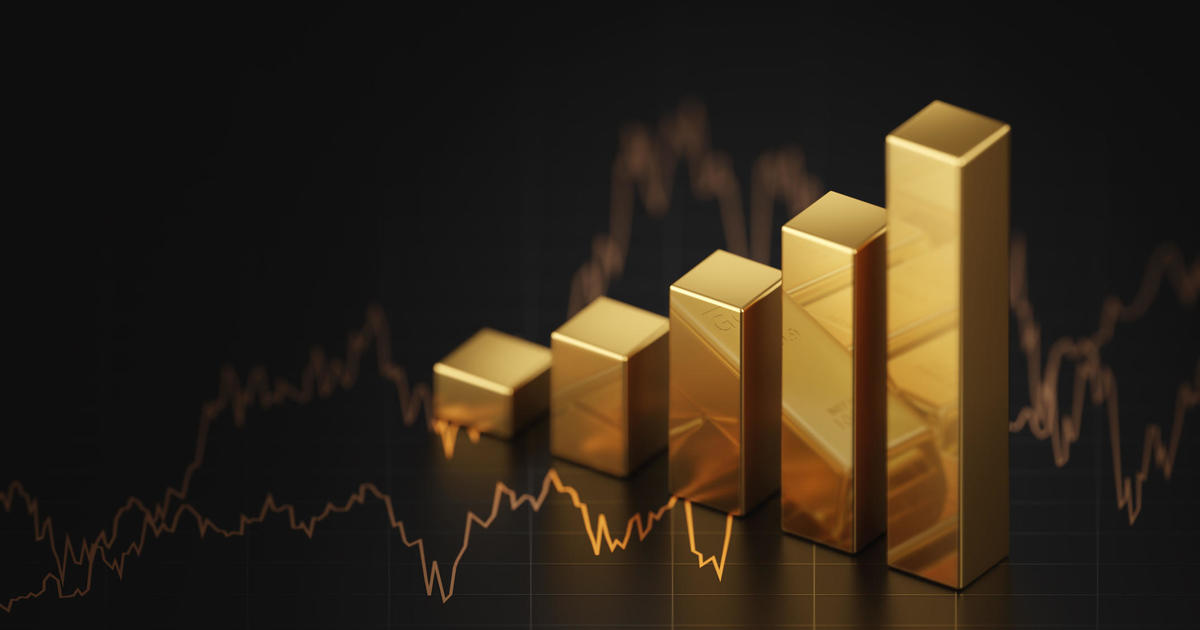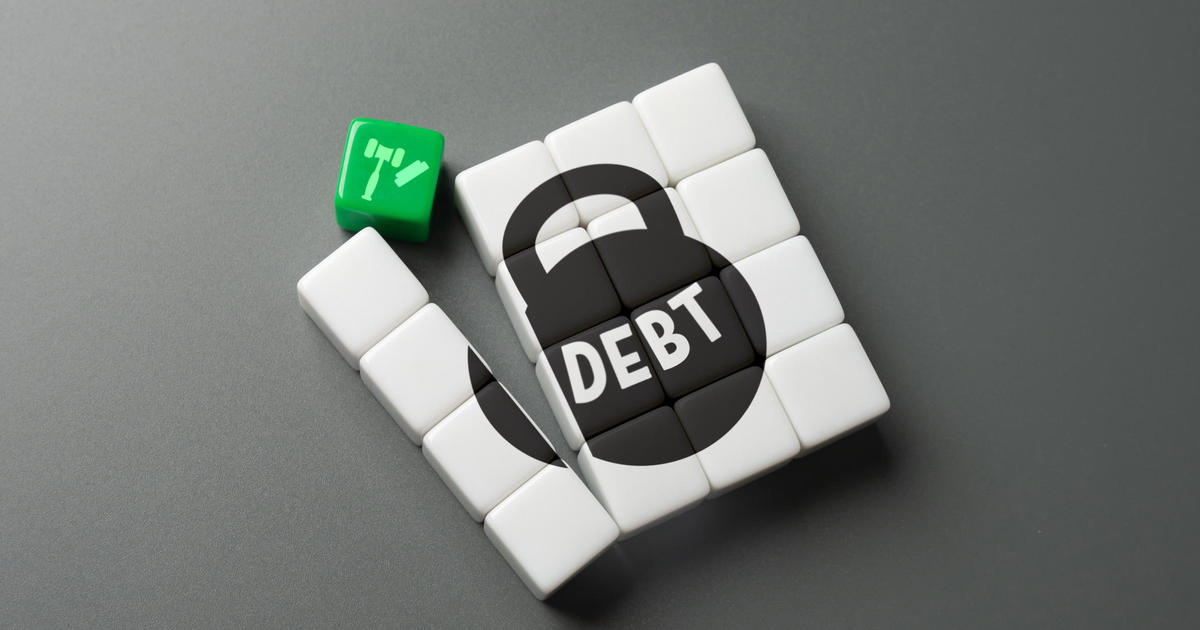Investors ignore income inequality at their peril
You've heard of the wealth gap. And you probably know it's growing worldwide, including in the U.S., where the measure is now as wide as it is in Russia.
But did you know how wide? According to a recent study from the National Bureau of Economic Research, almost 40 percent of U.S. households have zero or negative wealth. That is, they don't have any assets at all, while the top 5 percent hold about half.
Of course, Americans aren't alone. The recovery since the Great Recession shifted more than half -- 50.1 percent -- of all household wealth to the top 1 percent of global citizens, up from 45.5 percent in 2000, according to a recent report from investment bank Credit Suisse (CS).
That should set off alarms for investors who aren't paying enough attention to the wealth gap as U.S. markets break record high after record high, real estate prices are still climbing and the country comes close to what economists call "full employment," Deutsche Bank (DB) Chief International Economist Torsten Sløk argued in a presentation this month.
"For now, global growth is good and earnings are good and the tax reform will continue to boost stocks," said Sløk. "But over the medium term, we think investors are making a mistake if they don't take inequality into account as a game changer for the benign outlook the market has at the moment."
The Deutsche Bank note comes as gaps between more than just the rich and everyone else are widening. The gulf between upper-income families and lower- and middle-income families are also at the highest levels ever recorded, a recent Pew Research analysis found. In 2016, the median wealth of lower-income families was 42 percent less than in 2007. For middle-income families, it was 33 percent lower. Net worth for those groups, $10,800 and $110,1000 respectively, are comparable to 1989 levels, according to Pew.
Though lower- and middle-income families overall experienced some gains in the past decade, they aren't big enough to make up for the losses suffered during the recession, the study said.
Wealth disparity levels like these were last seen in the Gilded Age, and they may worsen this year, wrote Greg Wright, assistant professor of economics at the University of California, Merced, on the academic website The Conversation. The tax legislation passed last month cut taxes on capital and for "high-earning individuals," while giving lower-income earners "smaller, temporary cuts," he wrote.
"Meanwhile, the government has yet to renew federal funding for the Children's Health Insurance Program, a program affecting 9 million poor families," Wright added. "And the tax bill repealed the Affordable Care Act's individual insurance mandate, which may ultimately lead to a loss of coverage for millions of low- and middle-income Americans."
How did the world get here? The wealth gap has been widening over decades. The top 0.1 percent of American earners, or those with $6 million in average income, saw income surge by 320 percent between 1980 to 2014, compared with just 42 percent for middle-income workers, according to research published last year by economists including Gabriel Zucman.
That created a gulf in spending power between the richest Americans and the middle class, giving those at the top the buying power to spring for homes worth $1 million or more, Zucman argued.
Technology is also playing a part in middle-income level jobs where artificial intelligence and automation are expanding: Wages in those jobs are slipping, a recent Glassdoor report found. Pay for loan officers fell 6.1 percent in December compared with a year earlier, while office manager pay sank 1.1 percent and machine operators lost 1.9 percent as automation takes root more widely in manufacturing.
There's a racial component, too. For every $100 in wealth that white families accumulate, black families have built up about about $5, a September study from Yale researchers found.
The sweeping U.S. tax law changes may keep markets and property values rising for now, but there are already signs political norms might shift as 2018 elections loom, some economists argue.
It "raises the risks that voters want significant change from how society is currently designed," Deutsche Bank's Sløk said. "This can both be a turn to the left or the right. But generally a turn away from the current system."
And because the gap took decades to develop, the adjustments needed to correct aren't simple.
"There are no easy fixes," Sløk said. "Different politicians will have different answers to what the right solutions are. But given current global trends in inequality, I think investors are making a mistake if they don't take the populist consequences of inequality into account."






